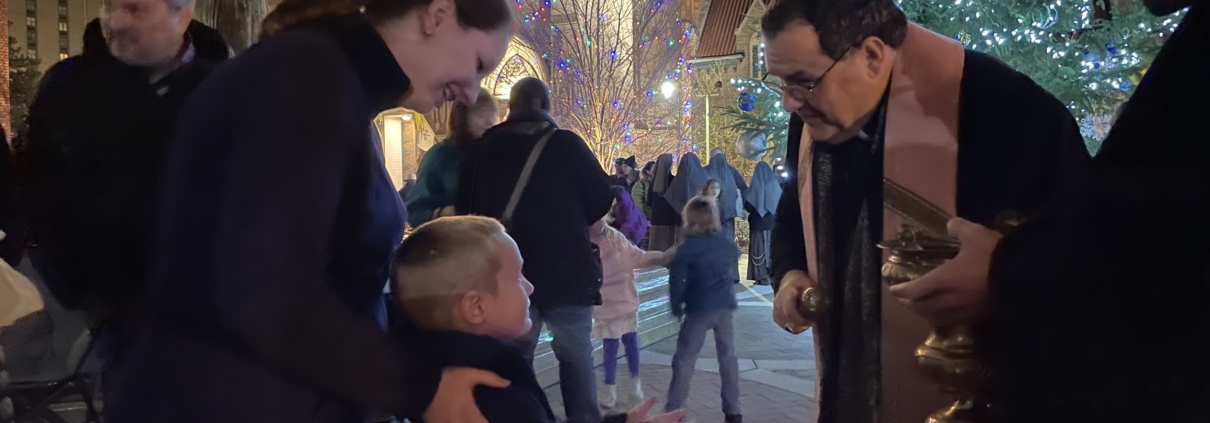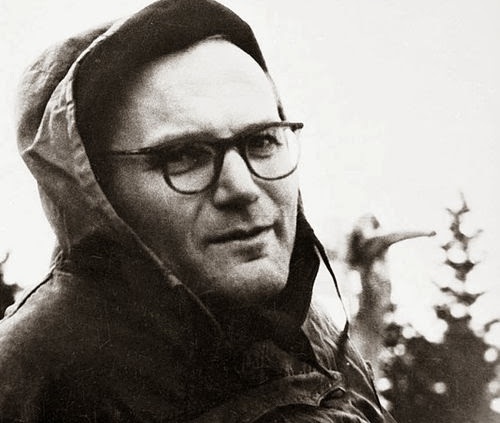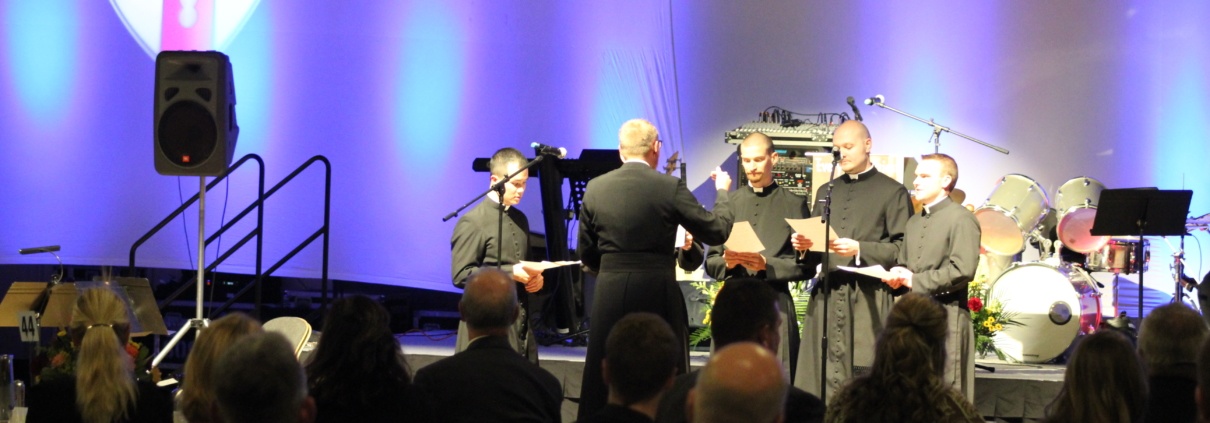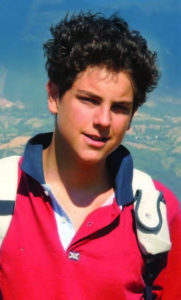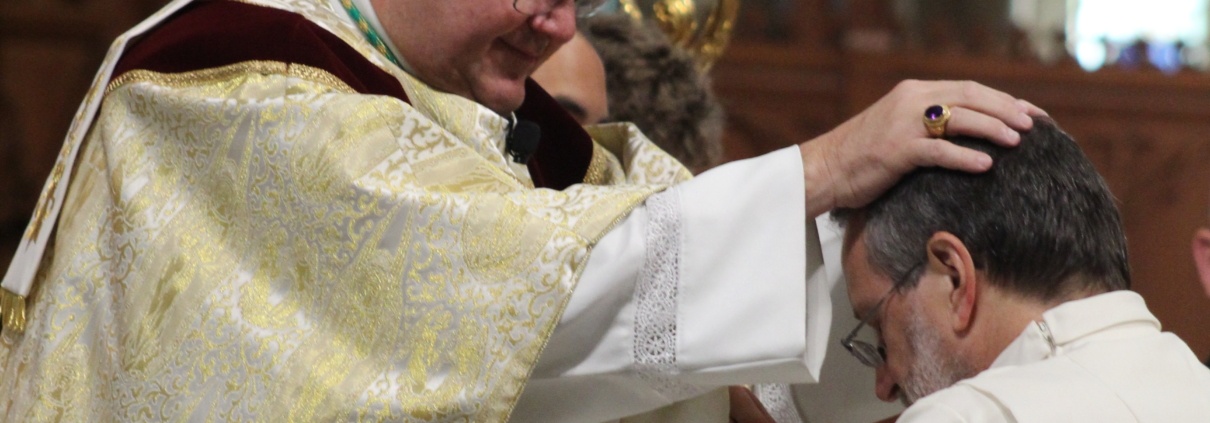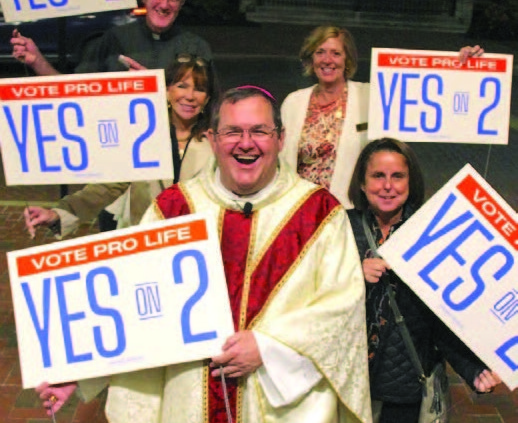TMU celebrates the 10 year anniversary of Mary, Seat of Wisdom Chapel
Laura Keener, Editor
On the feast of St. Juan Diego, Dec. 9, Bishop John Iffert joined the Thomas More University community in celebration of the 10th anniversary of the dedication of its Mary, Seat of Wisdom Chapel. Father Raymond Enzweiler and Father Gerald Twaddell, both faculty members at TMU, concelebrated, with Deacon Brian Cox assisting. Thomas More University President Joseph Chillo and Divine Providence Sister Margaret Stallmeyer, former president that oversaw the building of the chapel, served as lectors.
In his homily Bishop Iffert tied together the feast of the day — St. Juan Diego; the solemnity of the day before — the Immaculate Conception and the evening’s Gospel read-ing of Jesus meeting the woman at the well (John 4:19–24), to encourage those present to have faith in the Lord as they build up the Church in the cultural challenges of today.
In the recounting of the apparitions of Our Lady of Guadalupe, Bishop Iffert said, it may appear that Archbishop Fray Juan de Zumarraga had little faith when Juan Diego tells him that the Blessed Mother wants to build a church on the hill at Tepeyac. He wanted a sign.
“The truth is that the good bishop and his Franciscan brothers had been praying a long time for action on God’s part … they had come to know the situation of the indige-nous people of Mexico. They had come to know the devas-tation through the war and the introduction of disease. They had come to know the violence and plague that had led to the death of an estimated half of the indigenous pop-ulation. They had come to know that people, who were living in despair … The Christian religion was the religion of their oppressors and they were firmly determined to resist it.
“The good bishop needed a firm answer to his prayers. And so it came. Over the next months and years, millions of people came to see Our Lady of Guadalupe, who came with respect shown to the indigenous people and their culture … who served as a bridge to accept the gospel of Jesus; to know that this God, who they had learned of from foreigners who had brought disease, was also a God who loved them and respected them and had a future for them. Who helped them move from one way of life to another and to build up the temple of God.”
The woman at the well questions Jesus. Our people say you should worship on the mountain; your people say you should worship only in Jerusalem. So what’s your answer? Where do you think we should worship?
“Here’s what Christ comes to reveal to us, that there is a living water that bubbles up within us,” said Bishop Iffert. “That if we had known we would have asked for it from the beginning and the Holy Spirit would come and take up a dwelling in us … in our own being we would give good worship. Whenever that Spirit saw itself in another, greeted itself in another, accompany its own Spirit in another, wherever two or three are gathered in Christ’s name and the name of his Spirit, there will the Spirit be. Jesus says something new is happening right here in front of you.”
About the Immaculate Conception, Bishop Iffert said that from the moment of her conception, the Holy Spirit touched Mary and “she (Mary) had been prepared. She had received God’s grace because Christ gazed upon her from the very beginning. His loving gaze had changed and pre-pared her. Because of that, she was able to recognize something new that was promised, something that was being delivered into the world to be her salvation, and say, ‘yes. Yes, be it done to me according to your word.’ And the whole earth became a temple and she its tabernacle.”
Bishop Iffert said that we are also living in a time of cultural transition and that Catholic universities — priests, women religious, administrators, faculty and staff — are on the front lines of that change.
“We can no longer assume a shared cultural identity of Christ,” Bishop Iffert said. “We can no longer assume a shared knowledge of the Scriptures and tradition … we can no longer assume an intellectual tradition built from that wisdom and knowl-edge. There’s more diversity, less agreement.
“As a pastor of Christian people, I can’t help but notice that along with that loss of culture, along with that loss of the wisdom tradition, along with that shared knowledge, comes a growing sense of despair, a rise in rates of suicide, a sense of loss in direction … They’re (young people) not sure that their life is going to be as affluent as their parents life. They feel they’re bound to accomplish less, to have less, and since having is being in our culture, to be less. That leaves us wondering — like that good bishop to Juan Diego when he came with his tilma — how do we build the Church in this culture? How are we to facilitate true worship?”
“I’ll say to you, what we have witnessed in the life of Juan Diego, what we have witnessed in the life of the woman at the well, what we have witnessed in the life of Mary, herself, somehow, in some way that we may not see or recognize yet, God is working some new work in our midst. God is invoking that Spirit; that life-giving water dwells in our midst and he will raise up a living witness to the glory of God in a temple not made with human hands. That’s our confidence. That’s our faith, it is the virtue of Christian hope.”
Image: Bishop John Iffert consecrates the Eucharist, assisted by Deacon Brian Cox. TMU faculty member, Father Gerald Twaddell (left) stands near.


